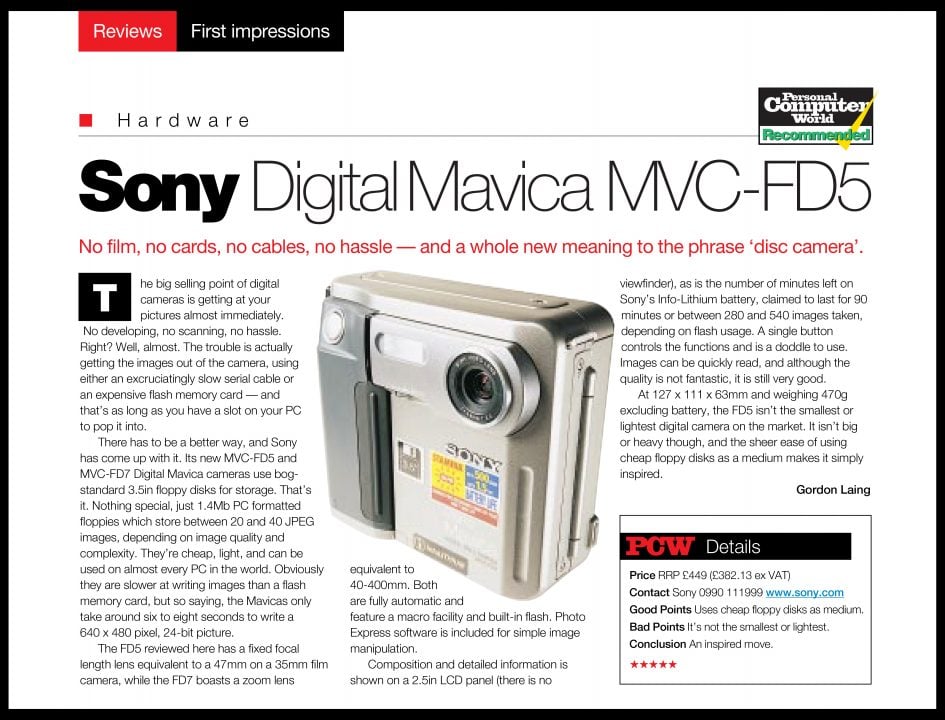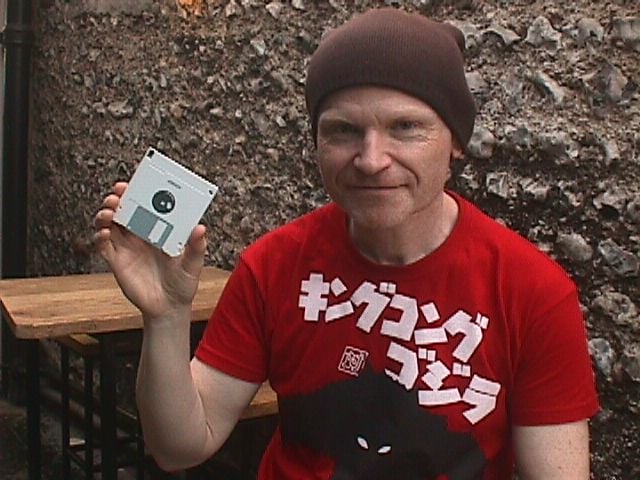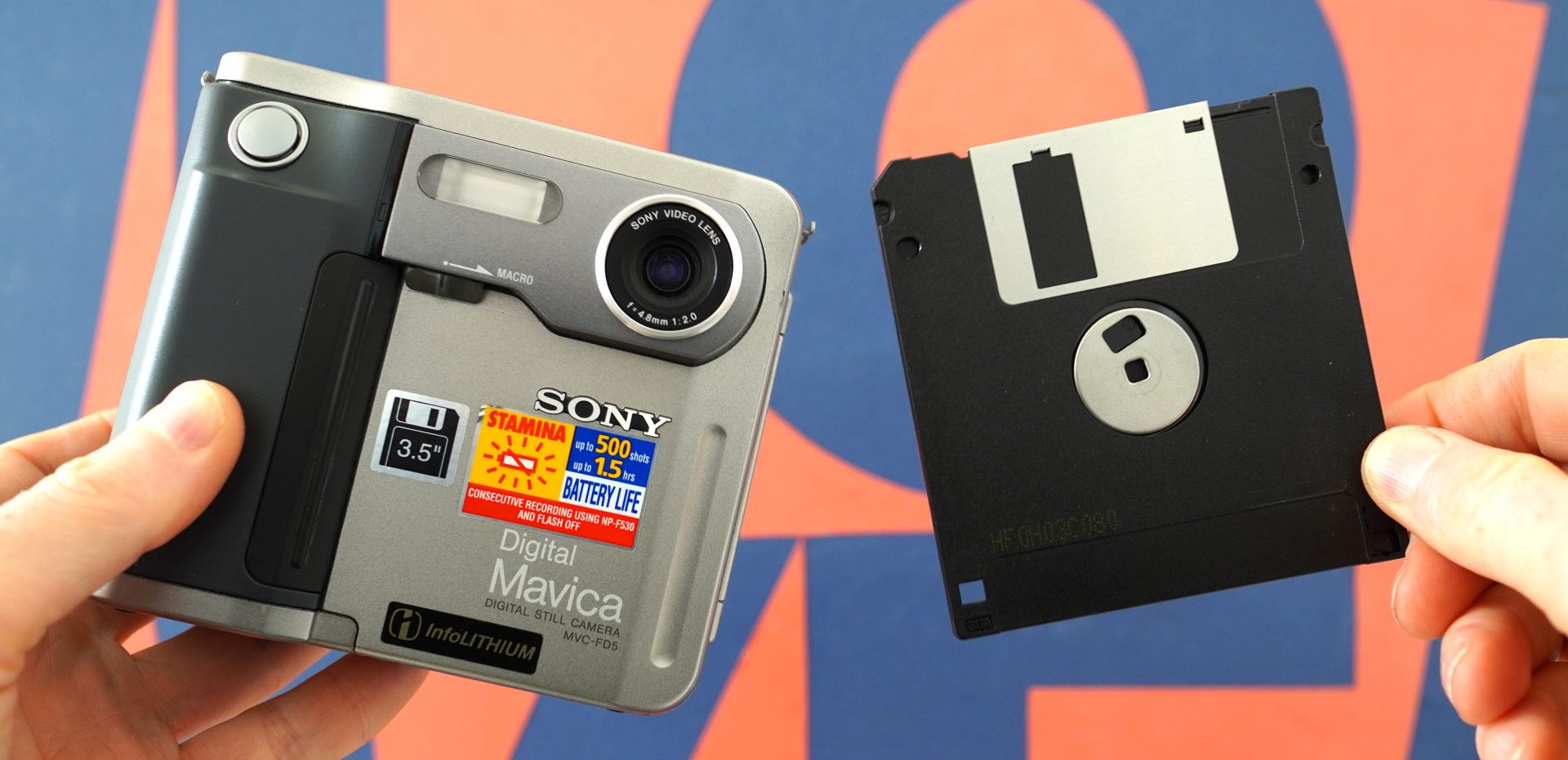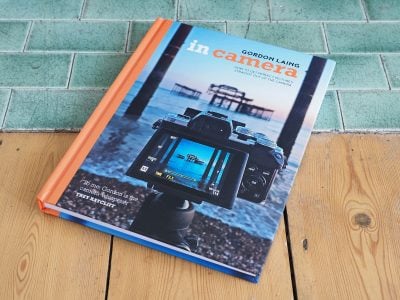Sony Mavica MVC FD5 retro review
-
-
Written by Gordon Laing
The earliest consumer digital cameras faced a catch 22 when it came to storage: either adopt prohibitively expensive memory cards or use built-in memory with limited capacity, then force owners to deal with complicated cables and software to access their photos. But Sony had a cunning plan and in 1997 launched a range of cameras that used neither: instead the new Digital Mavica series would record their photos onto bog-standard 3.5in floppy disks which could be slotted into virtually any computer of the time.
Sony launched Digital Mavica with two models: the MVC-FD5 with a fixed lens and the MVC-FD7 with a 10x optical zoom. They were the first Digital Mavicas to use 3.5in floppy disks, but they weren’t the first Mavica cameras altogether. Back in 1981, Sony developed a prototype based on an analogue video camera that recorded stills rather than motion and stored them onto 2in video floppy disks. Arguably the first electronic stills camera, Sony named it the Magnetic Video Camera, or Mavica for short. The prototype was used in the Los Angeles Olympics and developed into a commercial series sold in the late Eighties to early Nineties.
But this story is about the first Digital Mavica, the FD5, launched in 1997 for around 500 pounds or $600. I reviewed it in the October 1997 issue of Personal Computer World magazine in the UK (see below), concluded it was an inspired move by Sony and gave it a recommended award. It became the first in a highly successful series of cameras that saw it dominate sales, especially in the US.

Of course none of the Mavica’s were particularly light or compact, having to incorporate a 3.5in floppy drive and a battery to power it. On the FD5, the floppy drive is accessed from the side and slotting it in or ejecting it feels satisfyingly visceral – much more fun than inserting a boring SD card. Of course today floppy drives on computers have become long-extinct, but external USB models are readily available for around 20 pounds or dollars, and disks are also still available, although beware older ones you may have lying around might not work well today.
Sony powered the FD5 with an NP-F530 Lithium Ion pack, part of a series used on multiple camcorders and which still powers various accessories including lights and HDMI recorders today. As such it’s easy to find both replacement batteries and compatible chargers today.
The lens was equivalent to 47mm, delivering standard coverage, with a slider for closer macro focusing, while the FD7 launched alongside it offered a 10x zoom equivalent to 40-400mm.
The CCD sensor, adapted from standard definition video cameras, delivered images with VGA resolution – that’s 640×480 pixels or roughly one third of a Megapixel. Sony offered two JPEG compression options, both very aggressive in order to squeeze 20-40 photos onto a single 1.44MB floppy disk. Indeed best quality Fine JPEGs measured around 60kb each. The typical number of shots per disk though was a nice parallel to film cartridges where most photographers were used to having, say, 24 or 36 photos.
In an interesting hangover from the old bad days of interlaced video, the FD5 actually had a menu option to let you choose whether to record a single interlaced field, avoiding motion artefacts but having to scale 240 lines, or a whole frame which combined two fields for the full 480 lines but with the potential for anything in motion to become ghosted. So in Frame mode, hold steady and avoid subjects moving too quickly, or switch to Field and accept reduced resolution.
In operation the FD5 was pretty much fully automatic with no mode dial or control over exposure other than compensation of +/-1.5EV. There was no viewfinder, so it was down to the 2.5in screen for composition, with minimal information displayed. Annoyingly the camera also told you the number of photos taken, rather than how many you had remaining, so as you approached 20 you had to beware, but at least the Info Lithium battery displayed the number of minutes remaining.
Reading and writing on physically spinning discs also took its toll on handling with the FD5 taking six to eight seconds to record an image and about the same to view it in playback, both accompanied by the grinding access sounds familiar to all computer owners. While video did come to later models, it was stills-only on the FD5.
The Mavica series may seem quaintly old-fashioned today, but by the late Nineties it was the top-selling digital camera in the US, particularly popular with schools and real-estate. Sure it was slow, but then so were the serial data transfers of other digital cameras of the same period.
Convenience was the key and I remember taking photos of products I was reviewing for PCW magazine and handing a floppy straight to our art desk who used Macs. Compared to sending products to our photography studio, shooting film, developing, scanning, then sending files back on SyQuest drives by bike, it felt like the future.
Sony followed up the FD5 with a multitude of models, boosting the resolution to 2 Megapixels and adding basic video capabilities. Recognising the capacity of floppies as the limiting factor, they also developed a Memory Stick adapter shaped as a floppy that allowed existing Mavicas to use cards up to 64MB. Later models even sported a Memory Stick slot.
In the early 2000’s Sony took the concept further with the CD1000 that switched 1.44MB floppies for 8cm recordable CDs that could store up to 156MB and again be read in just about any computer without cables or software. It too proved a big hit with several successors with the series peaking with the CD500 in 2003 sporting 5 Megapixels.
By this time though, solid state memory cards had become affordable, allowing much smaller cameras to be built, while standard USB ports made it easy to copy images out of them. Meanwhile floppy drives, eliminated from Macs in the late 90s, were now becoming increasingly rare on new PCs, while the idea of recording onto CDs felt like unnecessary hassle. all leading to the end of the Mavica.
The original cunning of the Mavica though means one should be in every digital collection, and the sheer number of units sold mean they’re readily available at low prices. The most valuable is the first, the FD5, which to me has a fantastic old school charm about it and I loved shooting with it today. Popping out the disc in public also never gets old, with many younger people never actually having seen a real floppy beyond a drinks coaster or a save icon.
Sony Mavica MVC FD5 sample images







